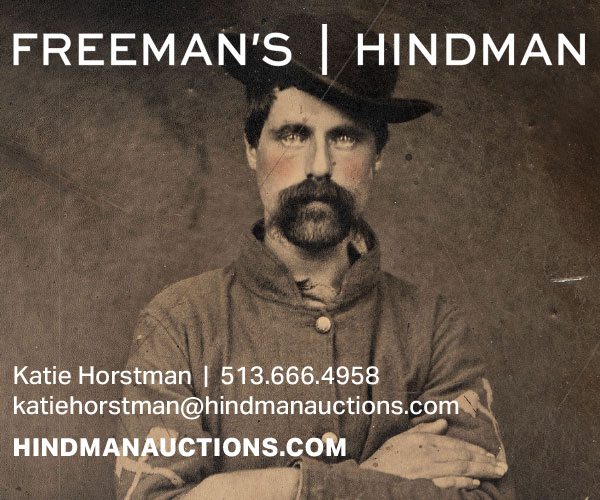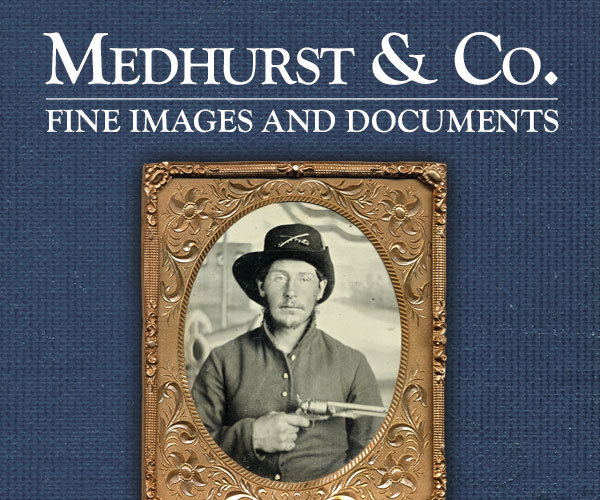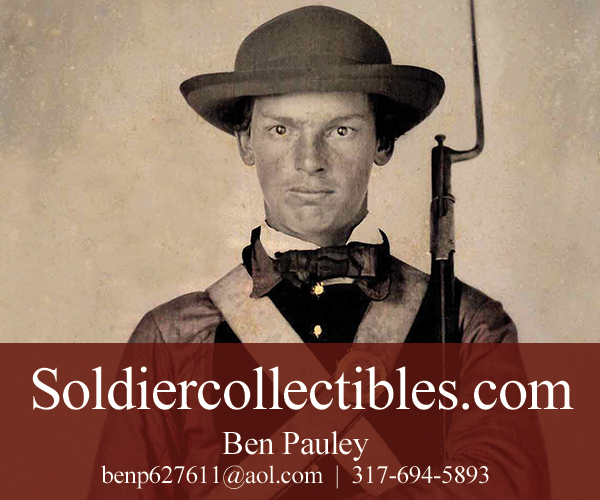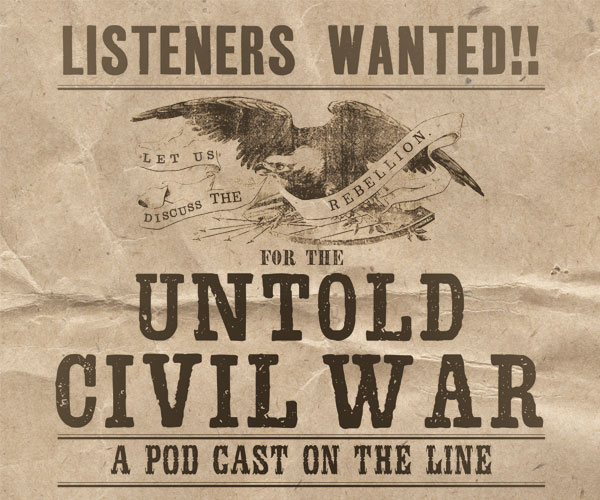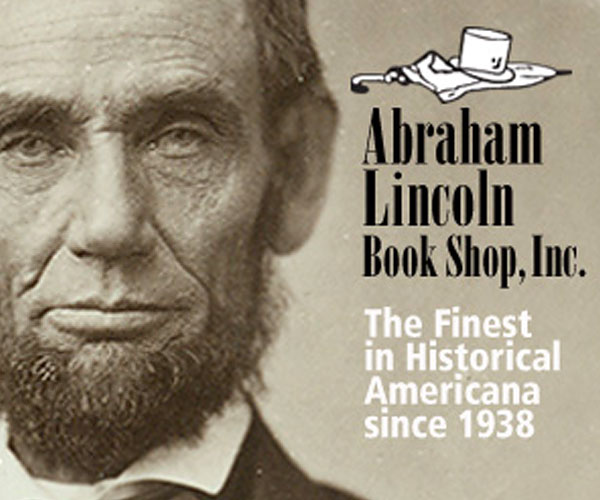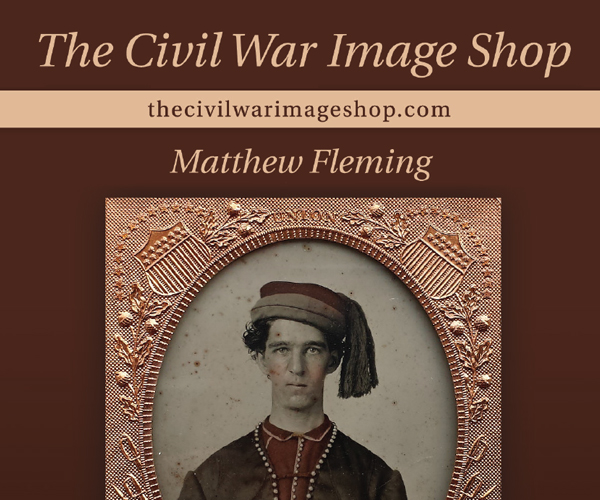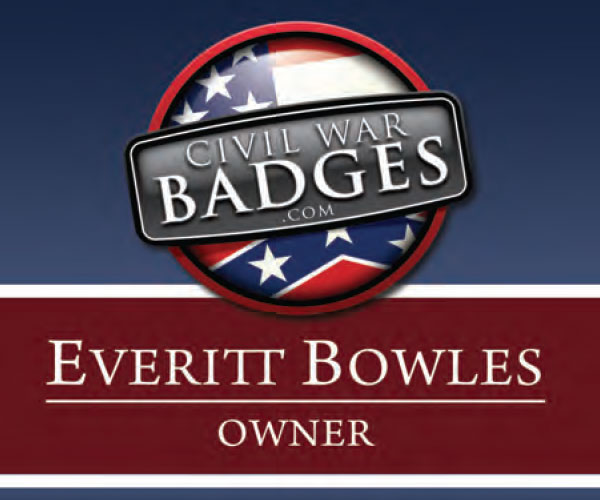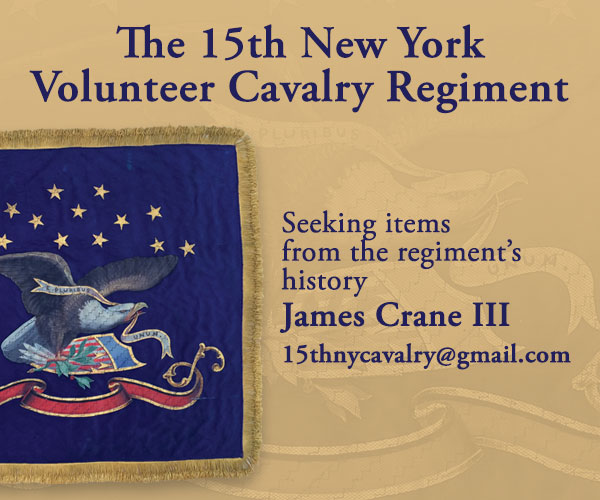A complete table of contents for the Autumn 2022 issue of Military Images magazine, and information about how to purchase single issues and subscriptions.
Vol. XL, No. 4
(80 pages)
Print edition: Visit our store to check availability
Digital edition: Visit JSTOR.org to purchase
Subscribe to MI
Explore the MI Archives:
Browse | Advanced search | Tutorial
Inside
Cover image
A sixth plate tintype from the Allen Cebula Collection pictures Charles W. Thompson of the 15th Illinois Infantry.
Table of Contents (p. 1)
Editor’s Desk (p. 2)
Brisk sales of top-tier images are an indicator of a healthy collector’s market. However, we do need affordable images to sustain growth in the hobby.
Mail Call (pp. 3-4)
Feedback includes praise for stories in the last issue, including a profile of Lafayette Curry Baker, and support for a Mississippi image identification.
Military Anthropologist (p. 4)
A survey of 190 identified Confederate portraits published in Military Images reveals format variations in six Southern states.
Passing in Review (p. 6)
We recommend two books: Colonels in Blue by Roger D. Hunt (McFarland) and White House Renovation Souvenirs by Wayne Smith (Glade Valley History Press).
Photo Sleuth by Kurt Luther (pp. 8-10)
A review of a grouping of U.S. Colored Troops officer photos in the American Civil War Museum collection reveals partial and misidentifications.
Antebellum Warriors (p. 12)
A sixth plate tintype of an axe-wielding sapper, the 1850s military equivalent of the Corps of Engineers of the Regular Army.
Most Hallowed Ground (p. 14)
Edward Bancroft Williston of the 2nd U.S. Artillery distinguished himself and his battery on the front lines during the 1864 Battle of Trevilian Station.
The Honored Few (p. 16)
Charles Henry Smith led his 1st Maine cavalrymen against Confederate Maj. Gen. Wade Hampton’s troopers, and later received the Medal of Honor.
The Citizenry (p. 18)
Daughters of the Regiment played an important role during the early days of the war, rallying recruits and appealing to patriotic impulses.
Fakes, Forgeries and Frauds by Perry M. Frohne (p. 20)
The must-have piece of fake detection equipment in your toolkit is this 10x magnifier.
Illinois Faces introduced by Austin Sundstrom and featuring portraits from the image collecting community (pp. 23-41)
Representative portraits and stories of Illinoisans who participated in the Civil War includes 45 images, most published for the first time.
Birthplace of the American Zouave by Ron Field (pp. 42-50)
The origins of Elmer Ephraim Ellsworth and how he fostered Zouave mania first in Chicago, Ill., and through the rest of America.
Beddo’s Bravery by Ronald S. Coddington, featuring artifacts from the Paul Denver collection (pp. 52-57)
At Shiloh, Sgt. Ira Beddo of the 11th Illinois Infantry proved his valor when, though badly wounded, he carried the colors in a memorable charge.
Hannibal’s Freedom by Ronald S. Coddington (pp. 58-61)
During the waning weeks of the war in North Carolina, the 12th Illinois Infantry mustered a new recruit into its ranks—am enslaved man.
Women Photographers of Illinois by Henry A. Pomerantz (pp. 62–63)
The author has recorded more than 550 photographers operating in Illinois during the Civil War years, including 14 women.
Getting a History Fix Behind of and In Front of the Camera: Q@A with Will Eichler (pp. 64-66)
Will Eichler discusses his work in the film industry, passion for the Civil War, and history-related projects including short films and HistoryFix.
Material Culture by Ronald S. Coddington (pp. 70-71)
The Dimick Target Rifle, produced in St. Louis, appealed to hunters in peacetime. During the Civil War, sharpshooters in the 66th Illinois Infantry used it.
Behind the Backdrop: Origins, artistry and photographers by Adam Ochs Fleischer (pp. 72-73)
“The Cavalry and Cannon backdrop” was used at Camp Hendershott in Iowa, and likely Illinois, by photographer Charles S. Newberry.
Vignette By Scott Valentine (p. 76)
Charles Augustus Oliver ran away from home and joined the 11th New Jersey Infantry. He suffered wounds at Fredericksburg and Gettysburg.
Stragglers (p. 78)
Portraits of a Virginia soldier, a Confederate who likely hailed from Alabama, and an officer in the 13th New York State Militia.
The Last Shot (p. 80)
Eli F. Chittenden had a passion for printing. After joining the 14th Illinois Infantry, he utilized his skills as publisher of a camp newspaper, the Skirmisher.



